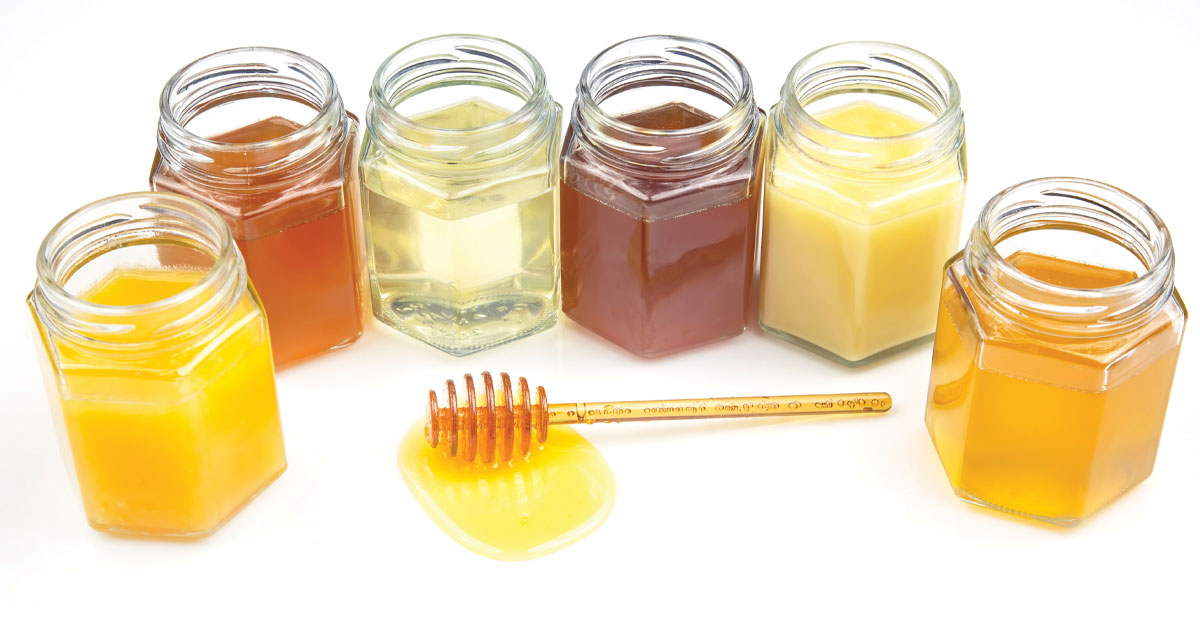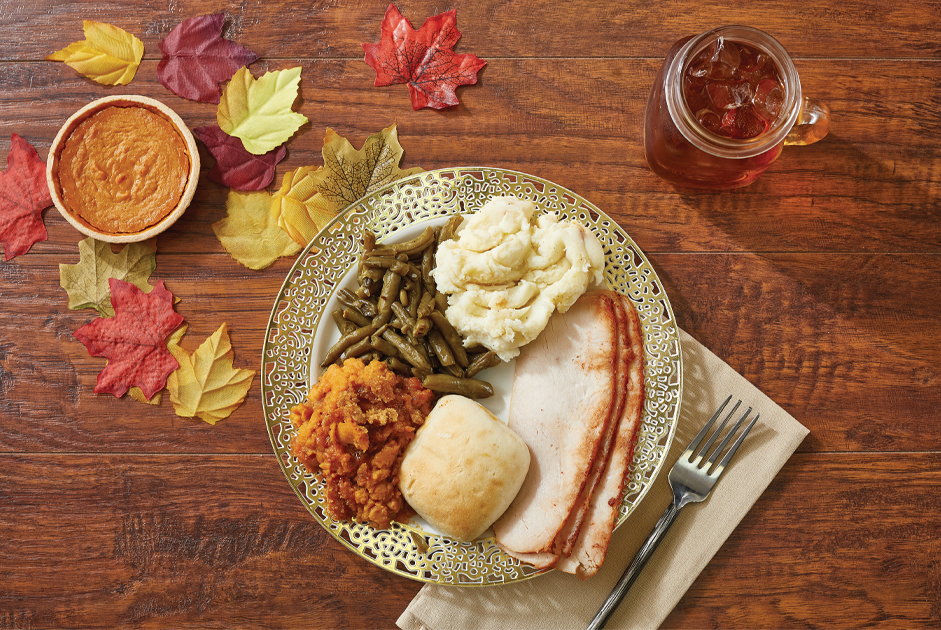Liquid gold is collected by thousands of honeybees, flying to a food or water source and returning to their colony. Upon landing at the entrance, forager bees greet the excited newcomer, anxious to witness the waggle dance; then, the female bees accept a taste of nectar before flying off.
We often take for granted the color derived from a local source. Most likely, if purchased from a North Carolina beekeeper, the honey is infused with the bees’ native foliage. David Tarpy, a professor of entomology and plant pathology, writes, “Each plant’s nectar has its own chemicals. Those chemicals get concentrated in the honey and give honey its particular flavor.”
Fact: One single teaspoon of honey takes 12 worker bees. A half-pound requires 30,000 honeybees to travel 27,500 miles.
The Color Wheel
In 2014, the Honey and Pollination Center in California assembled a panel of 20 individuals trained as beekeepers, tasters, and food enthusiasts, who accepted the challenge of working with a sensory scientist to create a honey flavor wheel. For example, coffee has eight categories of flavor notes; on the other hand, honey now includes almost 100 descriptors influencing man’s tastes and aromas.
Sourwood Honey
Sourwood trees grow between 33 and 66 feet tall, usually in the wild, remote mountain regions from New York to Mississippi; therefore, it’s a rare beekeeper who offers the monofloral variety in the Piedmont Triad, mixed as it is with a low percentage of “wildflowers.” On the color wheel, it is viewed as almost clear to light amber, offering tasters flavor notes of caramel, anise, maple, and spice; the timing, location, and weather dictate the color. In some areas, beekeepers claim their sourwood is medium brown, contains a purple cast, or appears dark brown; yet, despite its name, it has a sweet, full-textured taste.
Medicinal Benefit: Sourwood honey contains pinocembrin, an antioxidant in green tea and dark chocolate. While aiding in fighting against free radicals that damage healthy cells, pinocembrin is needed as an anti-inflammatory agent, helpful in conditions such as arthritis, stroke, and heart disease. Additionally, researchers have discovered sourwood honey includes “Candicidin,” a promising anti-fungal agent.
Alfalfa Honey
North Carolina has approximately two million acres for hay production. Alfalfa is grown in small, square bales to produce a high-quality horse hay. The outcome for beekeepers is alfalfa honey, which is light in coloring and tastes of grass and vanilla.
Medicinal Benefit: While all honey contains vitamins, minerals, and antioxidants to boost the healing of wounds, burns and inflammation, alfalfa honey aids stomach ulcers, lowers blood pressure, and lowers triglyceride levels.
Tulip Poplar
A prolific tree in the Piedmont Triad, it can extend beyond 150 feet, tucking large yellow teacup blooms between its broad leaves. During the honey flow, the abundant yields are noticeable to beekeepers, since the coloring, including the beeswax, appears between a dark brown and red. Bees themselves also arrive at the hive covered in rich, yellow pollen from their heads to their abdomens. Surprisingly, the honey is sweet like butter and ideal for bakers!
Medicinal Benefit: Most darker honey varieties contain a higher mineral and antioxidant content, polyphenol, which offers antimalarial protection to the body.
Wildflower
Not necessarily from just flowers, wildflower honey is derived from ground cover plants to fruit trees and bush buds. When foraging, bees visit the trees to extract nectar also from persimmon, maple, tulip poplar, and other pollinator sources. Every location will offer a unique variety of honey, especially between the arrival of spring and summer, and autumn to the winter months. Some labels will differentiate the jars according to season, allowing a distinction between flavors. According to Texas A&M University scientists, wildflower honey contains over 211 different pollen markers, which change location year to year.
Medicinal Benefit: Wildflower honey delivers essential vitamins, a high antioxidant content, and contains anti-bacterial properties, which boost the immune and respiratory systems, suppress allergic reactions, reduce inflammation, and increase energy levels. Consuming or applying topically can improve your overall health and skin tone.
Find a Local Beekeeper
More beekeepers reside in North Carolina than any other state, yet there is not enough honey to satisfy our population. Ingredients listed on jars in grocery and big-box stores offer a high-fructose and sugar-enriched concoction with a small percentage of raw, liquid gold. Tap into small local markets in search of beekeepers, or access North Carolina’s Cooperative Extension website for a list found through the Beekeepers’ Association page.
Raw, unpasteurized honey comes with a warning. Once tasted, there’s no chance of buying another jar labeled “Grade A” or “FDA approved.”
*Lisa is an N.C. State Cooperative Extension Master Gardener volunteer and a state-certified beekeeper.























